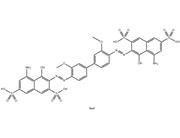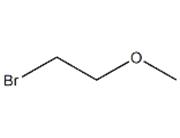1/2
Quaternium-15 NEW
- Min. Order1KG
- Purity98%
- Cas No51229-78-8
- Supply Abilityg-kg-tons, free sample is available
- Update time2025-09-25
| Product Name | Quaternium-15 |
| CAS No | 51229-78-8 |
| EC-No | |
| Min. Order | 1KG |
| Purity | 98% |
| Supply Ability | g-kg-tons, free sample is available |
| Release date | 2025/09/25 |
1. Materials information
Names
| Name | 1-((Z)-3-Chloroallyl)-1,3,5,7-tetraazaadamantan-1-ium chloride |
|---|---|
| Synonym | More Synonyms |
Chemical & Physical Properties
| Melting Point | 178-210ºC |
|---|---|
| Molecular Formula | C9H16Cl2N4 |
| Molecular Weight | 251.15600 |
| Exact Mass | 250.07500 |
| PSA | 9.72000 |
MSDS
SECTION 1: Identification of the substance/mixture and of the company/undertaking Product identifiers Product name: 1-(cis-3-Chloroallyl)-3,5,7-triaza-1- azoniaadamantane chloride REACH No.: A registration number is not available for this substance as the substance or its uses are exempted from registration, the annual tonnage does not require a registration or the registration is envisaged for a later registration deadline. CAS-No.: 51229-78-8 Relevant identified uses of the substance or mixture and uses advised against Identified uses: Laboratory chemicals, Manufacture of substances SECTION 2: Hazards identification Classification of the substance or mixture Classification according to Regulation (EC) No 1272/2008 Flammable solids (Category 2), H228 Acute toxicity, Oral (Category 4), H302 Skin irritation (Category 2), H315 Skin sensitisation (Category 1), H317 Reproductive toxicity (Category 2), H361d Chronic aquatic toxicity (Category 2), H411 For the full text of the H-Statements mentioned in this Section, see Section 16. Classification according to EU Directives 67/548/EEC or 1999/45/EC F Highly flammableR11 R63 Xn HarmfulR22 Xi IrritantR38 R43 N Dangerous for theR51/53 environment For the full text of the R-phrases mentioned in this Section, see Section 16. Label elements Labelling according Regulation (EC) No 1272/2008 Pictogram Signal wordWarning Hazard statement(s) H228Flammable solid. H302Harmful if swallowed. H315Causes skin irritation. H317May cause an allergic skin reaction. H361dSuspected of damaging the unborn child. H411Toxic to aquatic life with long lasting effects. Precautionary statement(s) P210Keep away from heat/sparks/open flames/hot surfaces. - No smoking. P273Avoid release to the environment. P280Wear protective gloves. Supplemental Hazardnone Statements Other hazards - none SECTION 3: Composition/information on ingredients Substances Formula: C9H16Cl2N4 Molecular Weight: 251,16 g/mol CAS-No.: 51229-78-8 Hazardous ingredients according to Regulation (EC) No 1272/2008 ComponentClassificationConcentration cis-1-(3-chloroallyl)-3,5,7-triaza-1-azoniaadamantane chloride CAS-No.51229-78-8Flam. Sol. 2; Acute Tox. 4;<= 100 % Index-No.612-251-00-9Skin Irrit. 2; Skin Sens. 1; Repr. 2; Aquatic Chronic 2; H228, H302, H315, H317, H361d, H411 Hazardous ingredients according to Directive 1999/45/EC ComponentClassificationConcentration cis-1-(3-chloroallyl)-3,5,7-triaza-1-azoniaadamantane chloride CAS-No.51229-78-8F, Xn, N, Repr.Cat.3, R11 -<= 100 % Index-No.612-251-00-9R22 - R38 - R43 - R63 - R51/53 For the full text of the H-Statements and R-Phrases mentioned in this Section, see Section 16 SECTION 4: First aid measures Description of first aid measures General advice Consult a physician. Show this safety data sheet to the doctor in attendance. If inhaled If breathed in, move person into fresh air. If not breathing, give artificial respiration. Consult a physician. In case of skin contact Wash off with soap and plenty of water. Consult a physician. In case of eye contact Flush eyes with water as a precaution. If swallowed Do NOT induce vomiting. Never give anything by mouth to an unconscious person. Rinse mouth with water. Consult a physician. Most important symptoms and effects, both acute and delayed The most important known symptoms and effects are described in the labelling (see section 2.2) and/or in section 11 Indication of any immediate medical attention and special treatment needed no data available SECTION 5: Firefighting measures Extinguishing media Suitable extinguishing media Use water spray, alcohol-resistant foam, dry chemical or carbon dioxide. Special hazards arising from the substance or mixture Carbon oxides, nitrogen oxides (NOx), Hydrogen chloride gas Advice for firefighters Wear self contained breathing apparatus for fire fighting if necessary. Further information Use water spray to cool unopened containers. SECTION 6: Accidental release measures Personal precautions, protective equipment and emergency procedures Use personal protective equipment. Avoid dust formation. Avoid breathing vapours, mist or gas. Ensure adequate ventilation. Remove all sources of ignition. Evacuate personnel to safe areas. Avoid breathing dust. For personal protection see section 8. Environmental precautions Prevent further leakage or spillage if safe to do so. Do not let product enter drains. Discharge into the environment must be avoided. Methods and materials for containment and cleaning up Sweep up and shovel. Contain spillage, and then collect with an electrically protected vacuum cleaner or by wet-brushing and place in container for disposal according to local regulations (see section 13). Keep in suitable, closed containers for disposal. Contain spillage, pick up with an electrically protected vacuum cleaner or by wet-brushing and transfer to a container for disposal according to local regulations (see section 13). Reference to other sections For disposal see section 13. SECTION 7: Handling and storage Precautions for safe handling Avoid contact with skin and eyes. Avoid formation of dust and aerosols. Provide appropriate exhaust ventilation at places where dust is formed.Keep away from sources of ignition - No smoking.Take measures to prevent the build up of electrostatic charge. For precautions see section 2.2. Conditions for safe storage, including any incompatibilities Store in cool place. Keep container tightly closed in a dry and well-ventilated place. Moisture sensitive. Specific end use(s) Apart from the uses mentioned in section 1.2 no other specific uses are stipulated SECTION 8: Exposure controls/personal protection Control parameters Components with workplace control parameters Exposure controls Appropriate engineering controls Handle in accordance with good industrial hygiene and safety practice. Wash hands before breaks and at the end of workday. Personal protective equipment Eye/face protection Face shield and safety glasses Use equipment for eye protection tested and approved under appropriate government standards such as NIOSH (US) or EN 166(EU). Skin protection Handle with gloves. Gloves must be inspected prior to use. Use proper glove removal technique (without touching glove's outer surface) to avoid skin contact with this product. Dispose of contaminated gloves after use in accordance with applicable laws and good laboratory practices. Wash and dry hands. The selected protective gloves have to satisfy the specifications of EU Directive 89/686/EEC and the standard EN 374 derived from it. Body Protection Complete suit protecting against chemicals, Flame retardant antistatic protective clothing, The type of protective equipment must be selected according to the concentration and amount of the dangerous substance at the specific workplace. Respiratory protection Where risk assessment shows air-purifying respirators are appropriate use a full-face particle respirator type N100 (US) or type P3 (EN 143) respirator cartridges as a backup to engineering controls. If the respirator is the sole means of protection, use a full-face supplied air respirator. Use respirators and components tested and approved under appropriate government standards such as NIOSH (US) or CEN (EU). Control of environmental exposure Prevent further leakage or spillage if safe to do so. Do not let product enter drains. Discharge into the environment must be avoided. SECTION 9: Physical and chemical properties Information on basic physical and chemical properties a) AppearanceForm: solid b) Odourno data available c) Odour Thresholdno data available d) pHno data available e) Melting point/freezingno data available point f) Initial boiling point and no data available boiling range g) Flash pointno data available h) Evapouration rateno data available i) Flammability (solid, gas) The substance or mixture is a flammable solid with the category 2. j) Upper/lowerno data available flammability or explosive limits k) Vapour pressureno data available l) Vapour densityno data available m) Relative densityno data available n) Water solubilityno data available o) Partition coefficient: n- no data available octanol/water p) Auto-ignitionno data available temperature q) Decompositionno data available temperature r) Viscosityno data available s) Explosive propertiesno data available t) Oxidizing propertiesno data available Other safety information no data available SECTION 10: Stability and reactivity Reactivity no data available Chemical stability Stable under recommended storage conditions. Possibility of hazardous reactions no data available Conditions to avoid Heat, flames and sparks. Extremes of temperature and direct sunlight. Incompatible materials Strong oxidizing agents Hazardous decomposition products Other decomposition products - no data available In the event of fire: see section 5 SECTION 11: Toxicological information Information on toxicological effects Acute toxicity LD50 Oral - rat - 1.550 mg/kg LD50 Dermal - rabbit - > 4.000 mg/kg Skin corrosion/irritation no data available Serious eye damage/eye irritation no data available Respiratory or skin sensitisation no data available Germ cell mutagenicity no data available Carcinogenicity IARC:No component of this product present at levels greater than or equal to 0.1% is identified as probable, possible or confirmed human carcinogen by IARC. Reproductive toxicity no data available Suspected human reproductive toxicant Specific target organ toxicity - single exposure no data available Specific target organ toxicity - repeated exposure no data available Aspiration hazard no data available Additional Information RTECS: Not available To the best of our knowledge, the chemical, physical, and toxicological properties have not been thoroughly investigated. SECTION 12: Ecological information Toxicity no data available Persistence and degradability no data available Bioaccumulative potential no data available Mobility in soil no data available Results of PBT and vPvB assessment PBT/vPvB assessment not available as chemical safety assessment not required/not conducted Other adverse effects Toxic to aquatic life with long lasting effects. SECTION 13: Disposal considerations Waste treatment methods Product Burn in a chemical incinerator equipped with an afterburner and scrubber but exert extra care in igniting as this material is highly flammable. Offer surplus and non-recyclable solutions to a licensed disposal company. Contaminated packaging Dispose of as unused product. SECTION 14: Transport information UN number ADR/RID: 1325IMDG: 1325IATA: 1325 UN proper shipping name ADR/RID: FLAMMABLE SOLID, ORGANIC, N.O.S. (1-(cis-3-Chloroallyl)-3,5,7-triaza-1- azoniaadamantane chloride) IMDG: FLAMMABLE SOLID, ORGANIC, N.O.S. (1-(cis-3-Chloroallyl)-3,5,7-triaza-1- azoniaadamantane chloride) IATA:Flammable solid, organic, n.o.s. (1-(cis-3-Chloroallyl)-3,5,7-triaza-1-azoniaadamantane chloride) Transport hazard class(es) ADR/RID: 4.1IMDG: 4.1IATA: 4.1 Packaging group ADR/RID: IIIMDG: IIIATA: II Environmental hazards ADR/RID: yesIMDG Marine pollutant: yesIATA: no Special precautions for user no data available SECTION 15 - REGULATORY INFORMATION N/A SECTION 16 - ADDITIONAL INFORMATION N/A |
Safety Information
| Hazard Codes | F,Xn |
|---|---|
| Risk Phrases | R11 |
| Safety Phrases | 16-36 |
| RIDADR | UN 1325 4.1/PG 2 |
| HS Code | 2933990090 |
Customs
| HS Code | 2933990090 |
|---|---|
| Summary | 2933990090. heterocyclic compounds with nitrogen hetero-atom(s) only. VAT:17.0%. Tax rebate rate:13.0%. . MFN tariff:6.5%. General tariff:20.0% |
2. Packaging of materials
For powders: normal is 25kgs/Drum or bag, or larger/smaller package as request.
For liquids: normal 25kgs/drum, 180-300kgs/bucket, or IBC, determined by the nature of the product.
Or smaller package 1kg/bottle, 10kgs/bottle as request.
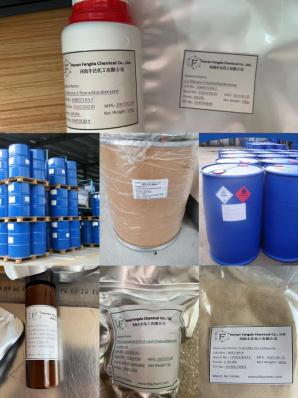
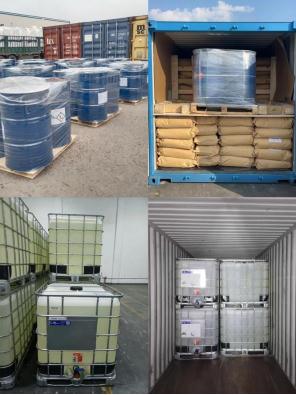
3. Shipping & Delivery
By Express
Provide door to door service
Suitable for goods under 50kg
Delivery: 3-7 days
Cost: low cost

By Air
Provide airport to airport service
Suitable for goods over 50kg
Delivery: 3-14 days
Cost: high cost
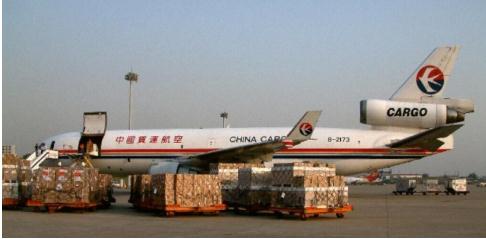
By Sea
Provide seaport to seaport service
Suitable for goods over 100kg
Delivery: 2-45 days
Cost: low cost

4. Contact information
For more details, pls contact us freely.
Email address: Tina@fdachem.com
Mob: 86 15225627621
WhatsApp/Skype/Wechat/LINE: 86 15225627621
Company Profile Introduction
Henan Fengda Chemical Co., Ltd. is located in the High-tech Development Zone of Henan Province. Specializing in the production and sales of various fine chemical products required for industrial production, including chemical raw materials, organic raw materials, petrochemicals, chemical reagents, solvents, catalysts, and additives, etc.
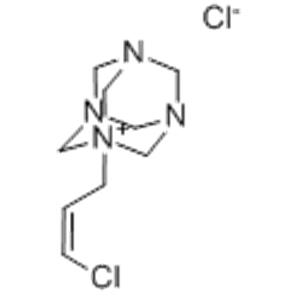


 China
China